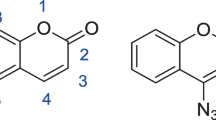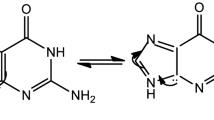Abstract
LYSINE and glyoxaline-4-5-dicarboxylic acid1 and histidine2 have been shown to activate preparations of Keilin horse-heart succinoxidase in unfavourable environments. A property common to these compounds is their ability to chelate heavy metals. We have accordingly tested the effect of other well-known chelating agents upon this system in bicarbonate buffer, which has been shown by Bonner2 to depress its activity. In Table 1 are shown typical results.
Similar content being viewed by others
References
Ball, E. G., and Cooper, F., J. Biol. Chem., 180, 113 (1949).
Bonner, W. D., Nature, 165, 757 (1950).
Slater, E. C., Biochem. J., 45, 1, 8, 14 (1949).
Judah, J., and Rees, K. R. (private communication, 1952).
Keilin, D., and Hartree, E. F., Biochem. J., 44, 205 (1949).
Horecker, B. L., Stotz, E., and Hogness, T. R., J. Biol. Chem., 128, 251 (1939).
Author information
Authors and Affiliations
Rights and permissions
About this article
Cite this article
ALTMANN, S., CROOK, E. Activation of Enzymes by Chelating Agents. Nature 171, 76–77 (1953). https://doi.org/10.1038/171076b0
Issue Date:
DOI: https://doi.org/10.1038/171076b0
- Springer Nature Limited





